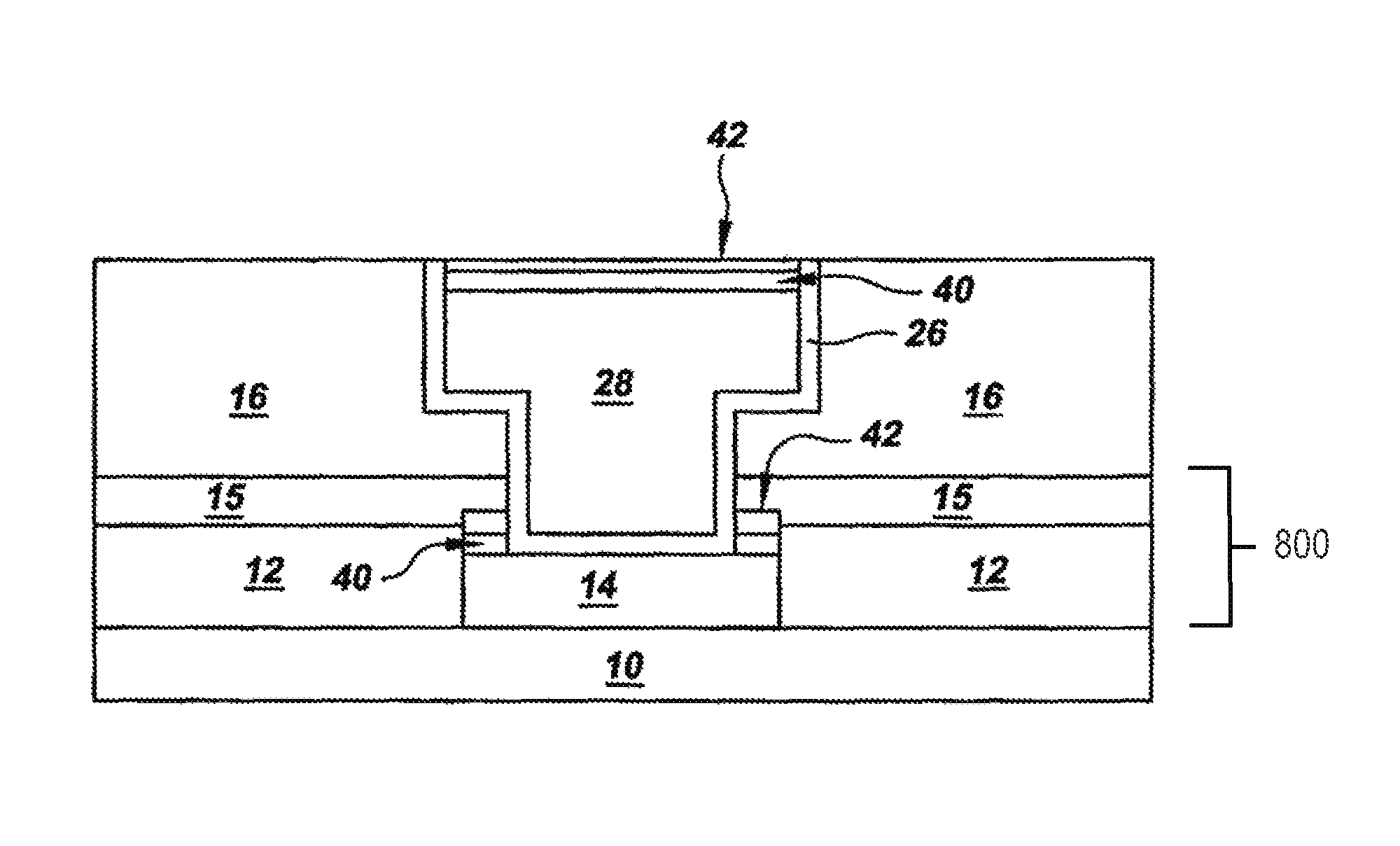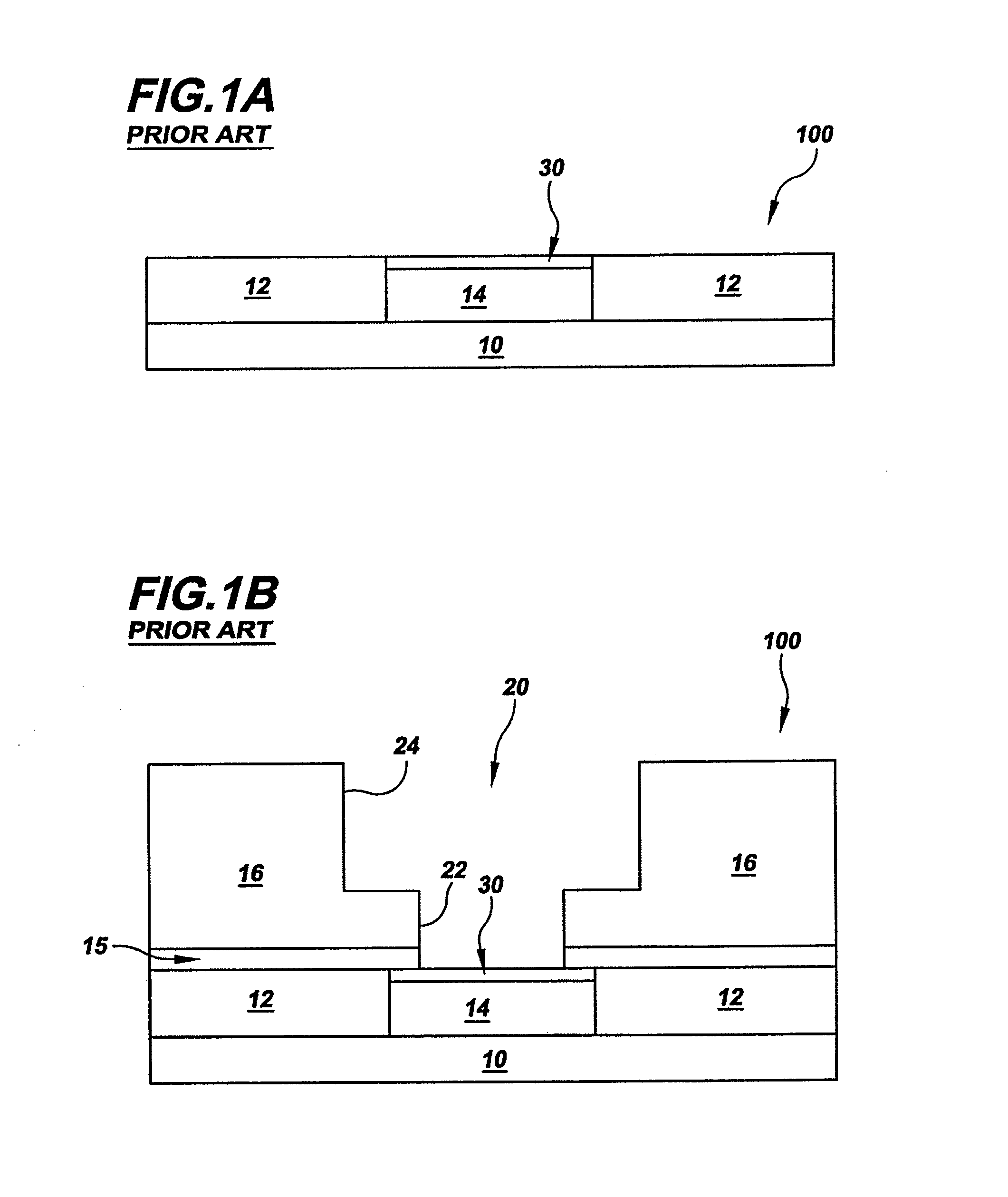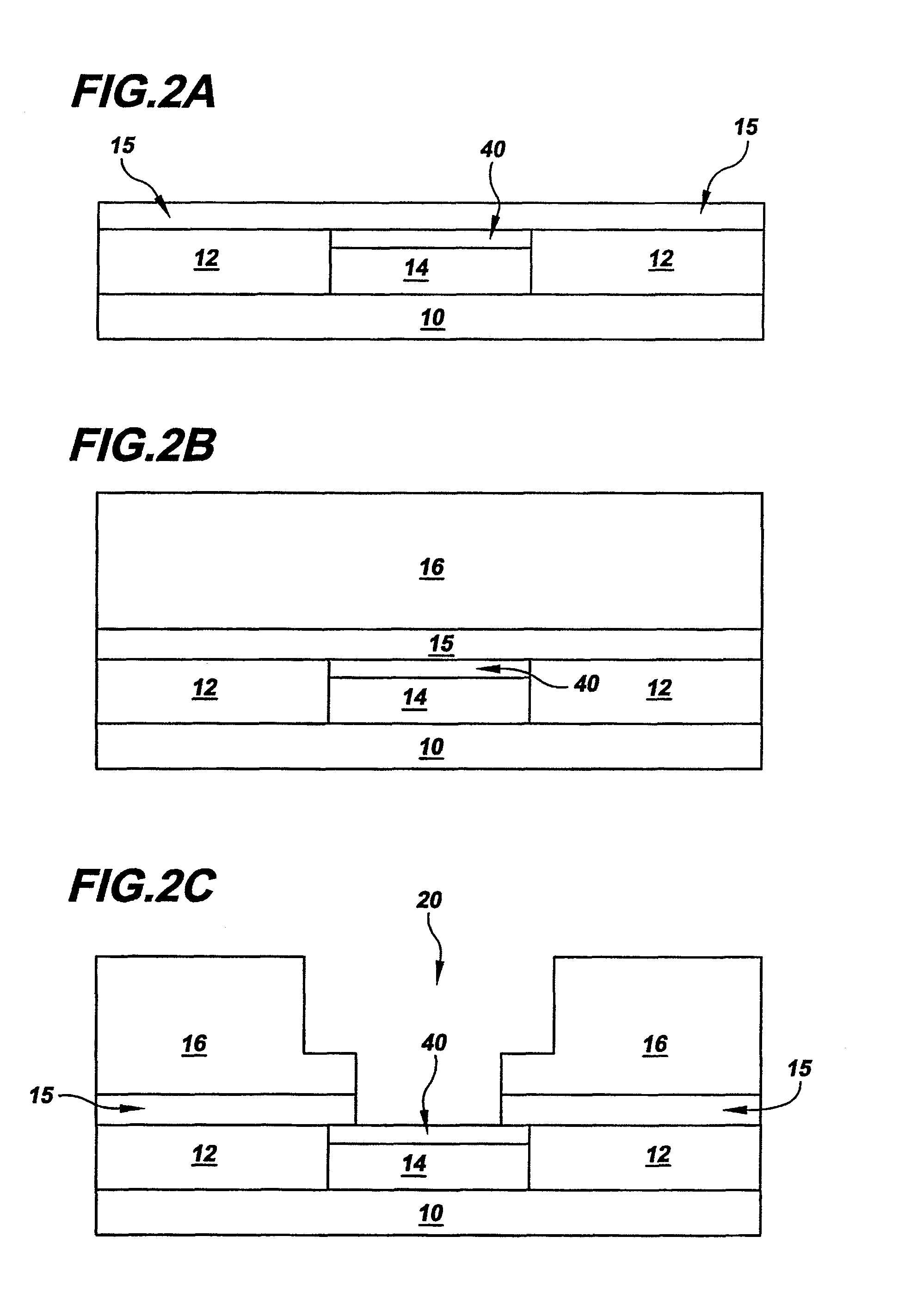Protection of Cu damascene interconnects by formation of a self-aligned buffer layer
a buffer layer and damascene technology, applied in the field of electronic components, can solve the problems of damascene copper wiring patterns being exposed to air, damascene copper wiring patterns being difficult to pattern and use for metal wiring, and being subject to oxidation. , to achieve the effect of improving process yield and reliability, and high performan
- Summary
- Abstract
- Description
- Claims
- Application Information
AI Technical Summary
Benefits of technology
Problems solved by technology
Method used
Image
Examples
example
[0062]Formation of a CuSix / SiN protective self-aligned buffer layer 40 / dielectric cap layer 42 may be accomplished using the following steps:
Station 1: Providing a structure 100 having exposed copper layer 14 into a first chamber of a multichamber processing tool, wherein such structure is cleaned followed by heating the structure to a temperature ranging from about 20° C. to about 500° C.
[0063]Station 2: The cleaned, preheated structure is then moved into a second chamber under a continuous vacuum, wherein SiH4 is flown into such chamber at a rate ranging from about 1 sccm to about 100 sccm, under temperatures ranging from about 150° C. to about 250° C., and pressures range of about 10 mTorr to about 100 Torr. SiH4 molecules react with copper atoms at a top portion of the copper layer 14 to transform such top copper layer portion to a CuSix protective self-aligned buffer layer 40 within the copper layer 14. This process forms CuSix, while avoiding Si diffusion, with insignificant r...
PUM
| Property | Measurement | Unit |
|---|---|---|
| temperature | aaaaa | aaaaa |
| pressures | aaaaa | aaaaa |
| temperatures | aaaaa | aaaaa |
Abstract
Description
Claims
Application Information
 Login to View More
Login to View More - R&D
- Intellectual Property
- Life Sciences
- Materials
- Tech Scout
- Unparalleled Data Quality
- Higher Quality Content
- 60% Fewer Hallucinations
Browse by: Latest US Patents, China's latest patents, Technical Efficacy Thesaurus, Application Domain, Technology Topic, Popular Technical Reports.
© 2025 PatSnap. All rights reserved.Legal|Privacy policy|Modern Slavery Act Transparency Statement|Sitemap|About US| Contact US: help@patsnap.com



